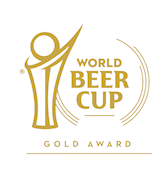TABLE OF CONTENTS
Best Flanders Beer Types
Dubbel is a rich and well-balanced Trappist beer that originated in Belgium and whose modern version is often associated with Henrik Verlinden who created the prototype at Westmalle brewery in 1926. This version was named Dubbel Bruin, and soon after its invention, the style was copied in many Belgian breweries.
Unlike other brown beers, typical Belgian dubbel will get its flavor from candi sugar—a thick and dark caramelized syrup that is added to the wort. These beers typically range from amber to copper, and they will usually have complex aromas and flavors reminiscent of toffee, raisins, malt, and dark fruit.
THE BEST Dubbel Ales

Lambic is a traditional beer style that has its roots in Brussels and the region of Pajottenland. This style must be made with a minimum of 30% wheat, and the wort is always spontaneously fermented with local and naturally occurring wild yeasts.
Because of different local microorganisms, these beers always have a unique and frequently unpredictable character. Due to its wild nature, many batches of lambic are sometimes blended, a style known as gueuze or geuze, to produce a more palatable version.
VARIATIONS OF Lambic
THE BEST Lambic Ales
Duvel is a famed Belgian pale ale that is produced by Duvel Moortgat Brewery. It was initially named Victory Ale—but its name was later changed into Duvel, presumably after it was referenced as nen echten duvel (a real devil) due to its high alcohol content (8.5%).
This pale ale became the brewery’s flagship beer, though several other styles are also available on the market. Classic Duvel is made from Scottish yeast, and it is hopped with Saaz and Styrian Golding hops. The beer has delicate effervescence, and it undergoes the second fermentation in the bottle.
Traditionally produced in Brussels and Pajottenland, these fruit beers are made with the addition of cherries. Initially, they were made with Schaarbeekse cherries, but nowadays, other Morello cherries may be used as well. Whole, macerated, or crushed cherries (including the pits) are added to aged lambics, and the beer then continues maturation.
It typically undergoes the second fermentation in the bottle. Like other types of lambic beers, kriek is also spontaneously fermented. Kriek lambics may differ in character, but they are usually refreshing and crisp, with a typical dry and tart finish.
VARIATIONS OF Kriek Lambic
Native to East Flanders, Oud Bruin or Flanders Brown is a Belgian-style brown ale with a distinctive sour character. These beers are usually blended and aged in steel vats. As they age, they develop complexity, and aged varieties are generally considered superior.
Most examples are medium-bodied with a color that varies from deep red to brown. They typically have a malty character accompanied by caramel notes, while the flavor is dark and fruity, reminiscent of dark berries, raisins, plums, prunes, and dates.
Flanders Red is a type of aged sour ale hailing from West Flanders that is often described as a wine-like beer style. The examples are typically medium-bodied and have a distinctive sour character that can vary from balanced to intense.
Their color ranges from burgundy to reddish-brown, and their profile is dominated by complex fruity flavors and aromas reminiscent of cherries, currants, and plums. Hop aroma is absent, while the malt character is present but not overpowering. Flanders Reds are often blended, and most examples are aged in oak barrels, which may impart subtle chocolate, vanilla, and spice notes.
THE BEST Flanders Red Ales
This Belgian beer style falls in the category of lambics—traditional beers made with spontaneous fermentation. As evident from the name, fruit lambics are made with the addition of fruit. Traditional and the most popular version is the cherry-flavored kriek.
However, several other varieties are also produced, including peach-flavored pêche, raspberry framboise, black currant cassis, and several other variations. Fruit lambics are made with aged lambics in which the whole fruit is then added and macerated before the base is filtered and bottled.
VARIATIONS OF Fruit Lambic
Gueuze is a Belgian lambic-style that is made by blending young and old lambic beers—traditional Belgian brews that are fermented with wild yeasts. The blends then undergo secondary fermentation in the bottle. The combination is made by brewer’s preference, and the final character of gueuze is often unpredictable.
They are typically very effervescent, crisp, and refreshing with unique earthy aromas reminiscent of hay and leather. Usually, they will display moderate sour and malt character, and they will sometimes have nuances of citrus fruit as well as hints of vanilla and oak.
TABLE OF CONTENTS
Best Flanders Beer Producers
AWARDS

Frankfurt International Trophy - Grand Gold
2024

Concours International de Lyon - Gold
2024
BEST Brouwerij Haeseveld Beers
AWARDS

International Beer Challenge - Best Ale above 5%
2020
BEST Brouwerij De Poes BVBA Beers
AWARDS

Frankfurt International Trophy - Grand Gold
2024
BEST Vrijstaat Vanmol Brewing bv Beers
AWARDS

Frankfurt International Trophy - Grand Gold
2023
BEST Rat-Invest Beers
AWARDS

European Beer Star - Gold
2021

World Beer Cup - Gold
2018, 2016

Untappd - 3.7
BEST Brouwerij Boon Beers
AWARDS

Frankfurt International Trophy - Grand Gold
2021
BEST Brouwerij van Renterghem (Lowen Vof) Beers
AWARDS

European Beer Star - Gold
2022

International Brewing Awards - Gold
2021, 2019, 2017

Untappd - 3.3
BEST Alken-Maes Beers
TABLE OF CONTENTS
Best Flanders Beers
AWARDS

Frankfurt International Trophy - Grand Gold
2024

Concours International de Lyon - Gold
2024
AWARDS

European Beer Star - Gold
2022
AWARDS

European Beer Star - Gold
2021
AWARDS

International Beer Challenge - Best Ale above 5%
2020
AWARDS

World Beer Awards - Gold
2023
AWARDS

World Beer Awards - Gold
2023
AWARDS

World Beer Awards - Gold
2023
AWARDS

Frankfurt International Trophy - Grand Gold
2024
AWARDS

Concours International de Lyon - Gold
2024
AWARDS

Frankfurt International Trophy - Grand Gold
2022
TasteAtlas food rankings are based on the ratings of the TasteAtlas audience, with a series of mechanisms that recognize real users and that ignore bot, nationalist or local patriotic ratings, and give additional value to the ratings of users that the system recognizes as knowledgeable. TasteAtlas Rankings should not be seen as the final global conclusion about food. Their purpose is to promote excellent local foods, instill pride in traditional dishes, and arouse curiosity about dishes you haven’t tried.
































